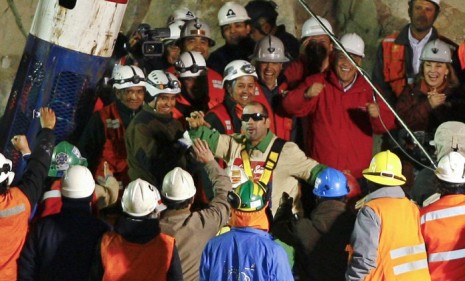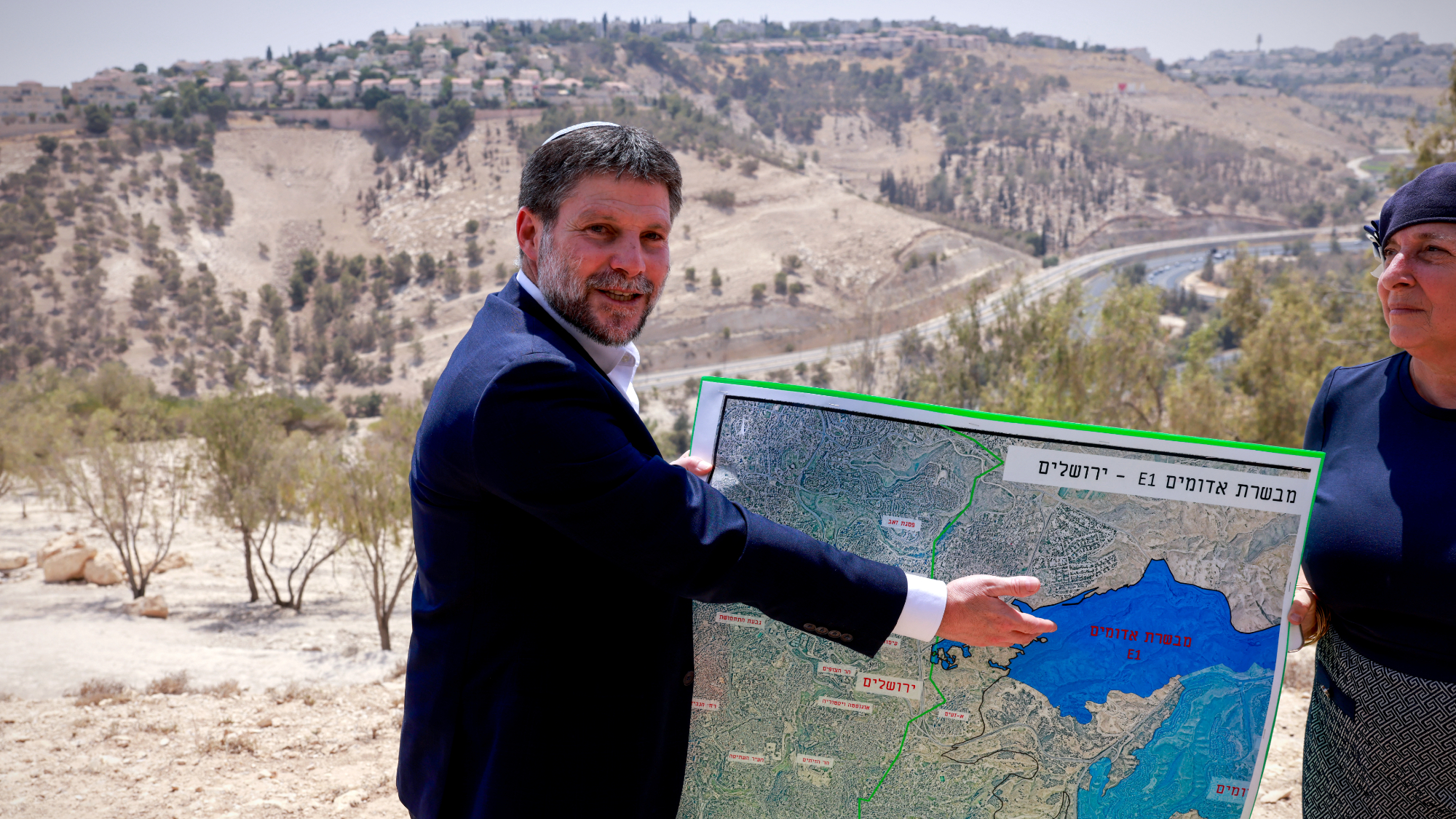Chilean miners: How has the ordeal affected their health?
"Los 33" made it out alive, and in better physical shape than expected, but experts warn they may face critical mental-health issues in the months to come

Chile's 33 "miracle miners" emerged from their unprecedented 69-day confinement underground in better health than experts had expected. Some of the miners bounded energetically out of the rescue capsule; others played with a soccer ball. But at least one miner has pneumonia, and experts say it is doubtful that none of them will emerge unscathed. (Watch an ITN News report on health questions about the miners.) Here is a look at the mental and physical health challenges the miners face, and who will help them:
What health problems have appeared already?
Health Minister Jaime Mañalich says that while most of the miners appear to be in "more than satisfactory" shape, one of them — 63-year-old Mario Gomez — has acute pneumonia (which is responding to antibiotics). Another miner, Mario Sepulveda, has the lung disease silicosis, and two others need dental surgery after going weeks without a toothbrush.
The Week
Escape your echo chamber. Get the facts behind the news, plus analysis from multiple perspectives.

Sign up for The Week's Free Newsletters
From our morning news briefing to a weekly Good News Newsletter, get the best of The Week delivered directly to your inbox.
From our morning news briefing to a weekly Good News Newsletter, get the best of The Week delivered directly to your inbox.
Had experts been expecting more health complications?
Absolutely. Medical professionals and lay pundits had warned that two months in humid, dark isolation would leave the miners with serious fungal infections, temporary blindness from the sunlight, partially collapsed lungs, atrophied muscles, and blood clots, among other problems. "None of those predictions came true," says Donald McNeil in The New York Times, though, admittedly, "some bordered on the absurd" — like the prediction that the miners would get the bends on the ride up.
Why are they in such good apparent health?
They received excellent medical care from "Chilean doctors who ministered to them through tubes leading 2,300 feet into the earth," reports The New York Times, and organized themselves early "to keep their environment clean, find water and get exercise." Expensive sunglasses donated by Oakley protected their eyes from damage on the way up.
A free daily email with the biggest news stories of the day – and the best features from TheWeek.com
Are the healthy miners home free?
Probably not. Although there could be undetected physical issues, the real concern is mental health. "It's almost a guarantee that we're going to see cases of post-traumatic stress disorder, sleep disturbances, and clinical depression," says University of Texas psychologist Sheryl Bishop. "They may look fine now, but they could have flashbacks and nightmares six months from now or even later." Also, adjusting to fame and then to a subsequent lack of attention "can be great problem for regular people," says Leo Braudy, author of The Frenzy of Renown: Fame and Its History, as quoted in CNN. In some cases, being "lionized" destroys them.
What is Chile doing to help the miners post-rescue?
Chile has spent up to $20 million caring for and rescuing the miners, and "every peso was well spent," says Chilean President Sebastian Piñeda. And Chile is still "taking good care of them," adds Health Minister Mañalich, who says the government is offering to provide care and therapy for at least six months. It will be up to the miners — and, critically, their families — to decide what to do with their lives and the lucrative offers that are pouring in. "I really don't think they know what's awaiting them," says rescue expert Francisco Lermanda. "They might have a vague idea about it, think they can cut a book deal or maybe even a movie, but this is much more than that."
Sources: CBS News, ABC News, CNN, New York Times, LA Times, Wall Street Journal, BBC News, USA Today
-
 The 8 best drama movies of 2025
The 8 best drama movies of 2025the week recommends Nuclear war, dictatorship and the summer of 2020 highlight the most important and memorable films of 2025
-
 Why, really, is Trump going after Venezuela?
Why, really, is Trump going after Venezuela?Talking Points It might be oil, rare minerals or Putin
-
 Israel approves new West Bank settlements
Israel approves new West Bank settlementsSpeed Read The ‘Israeli onslaught has all but vanquished a free Palestinian existence in the West Bank’